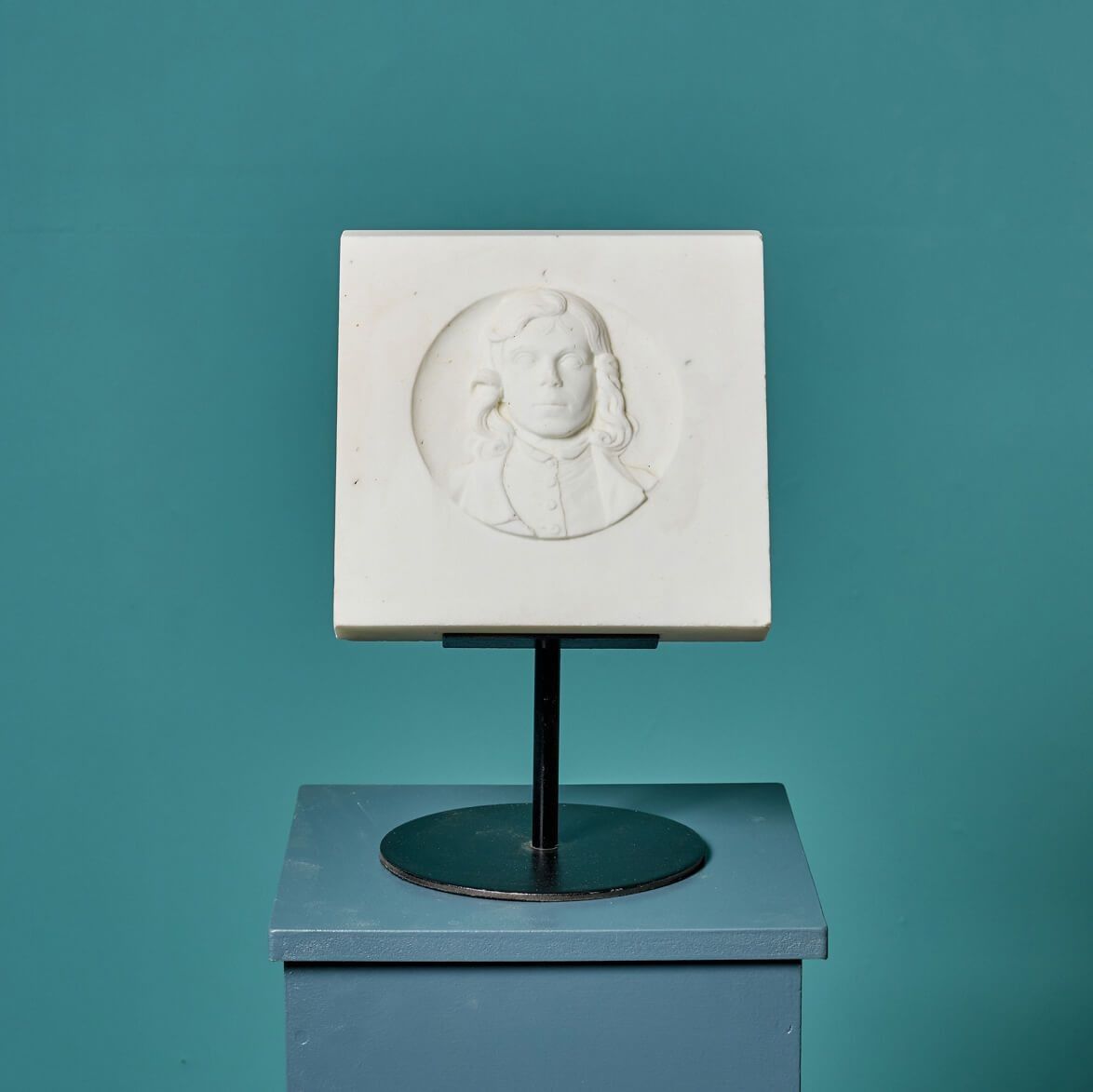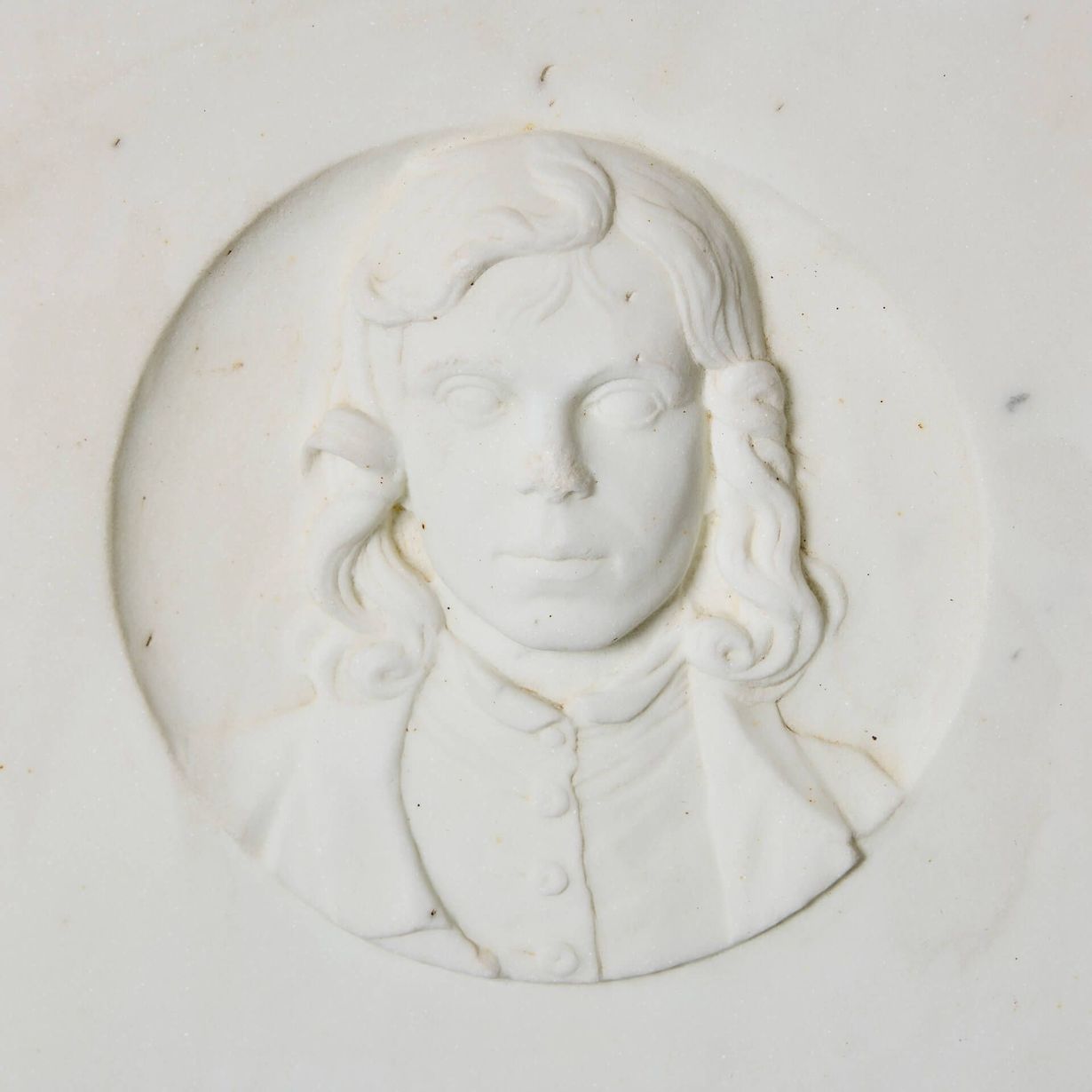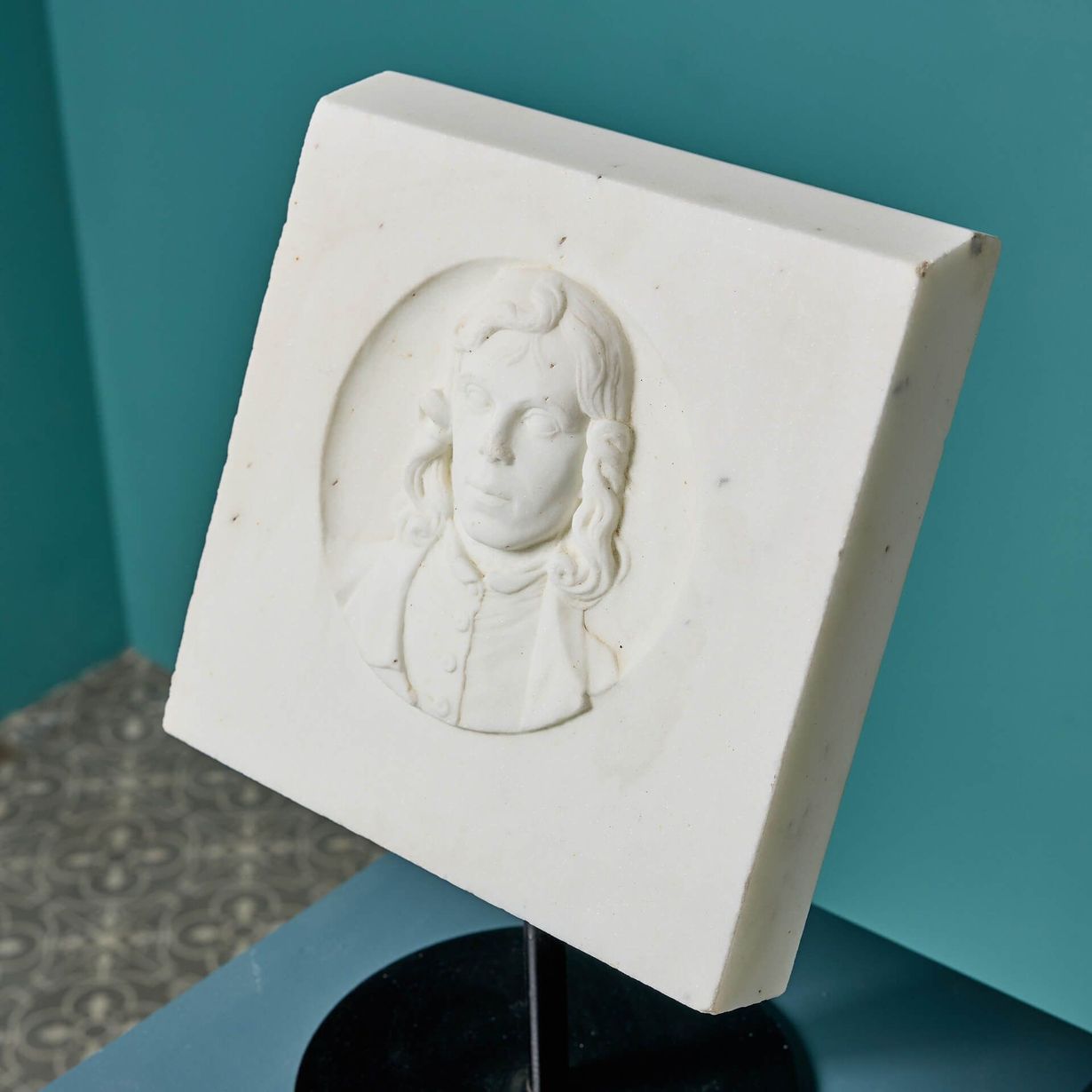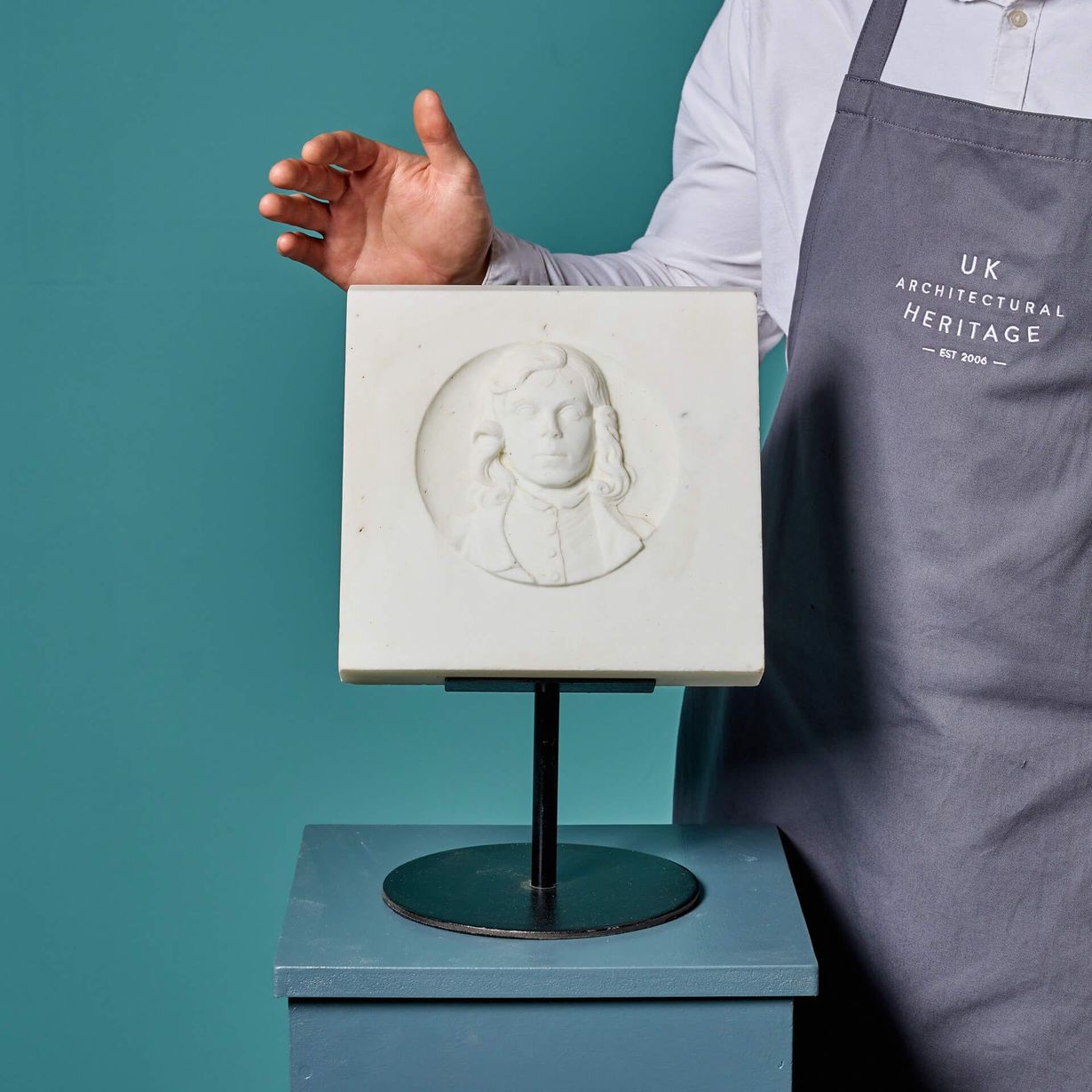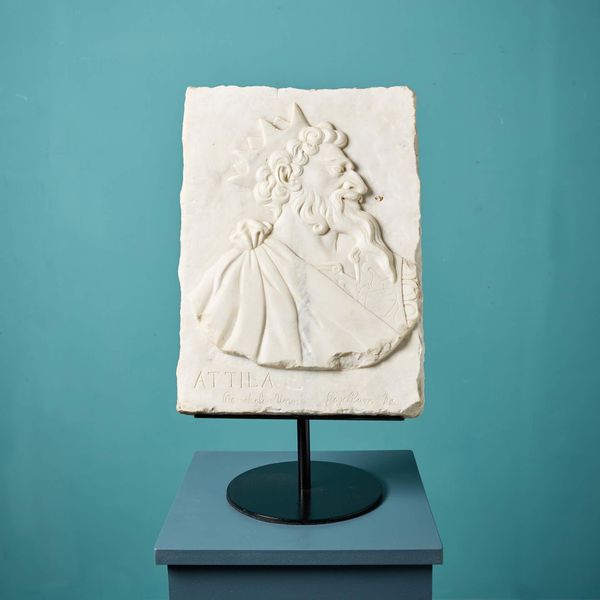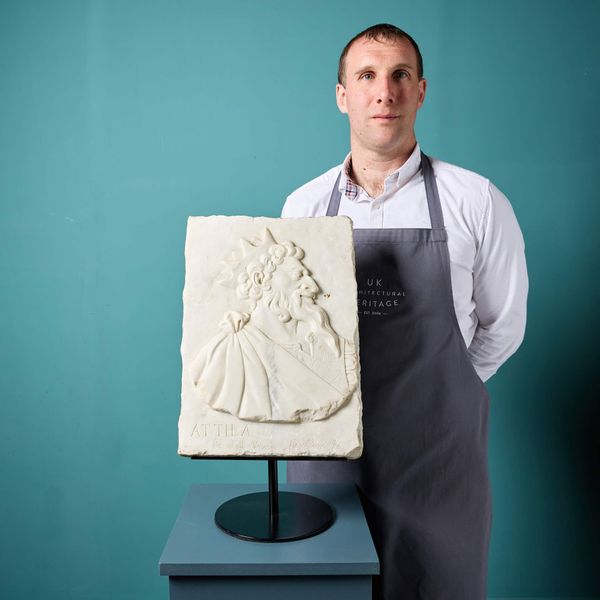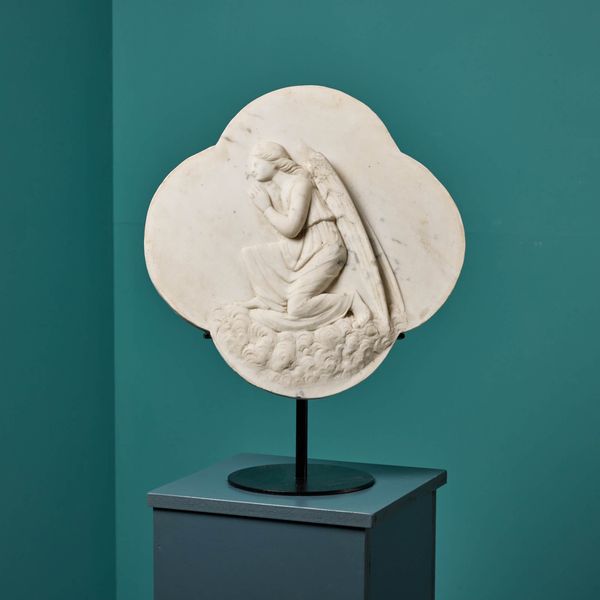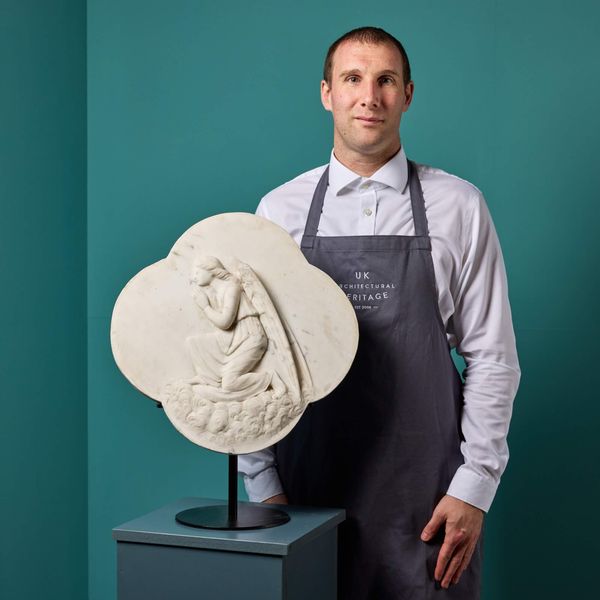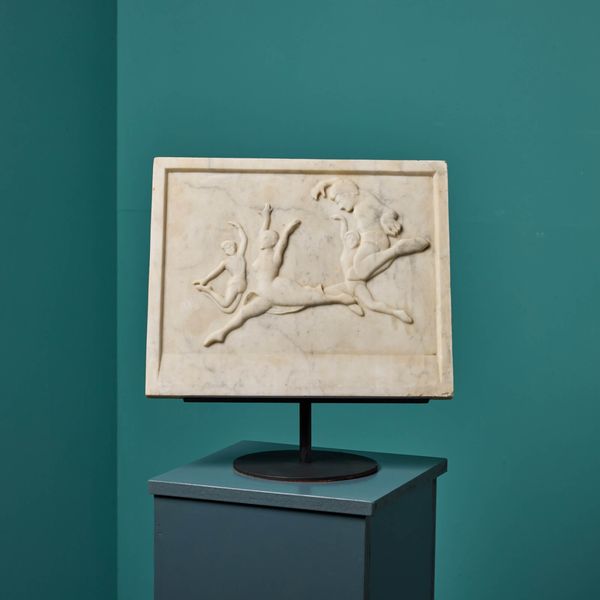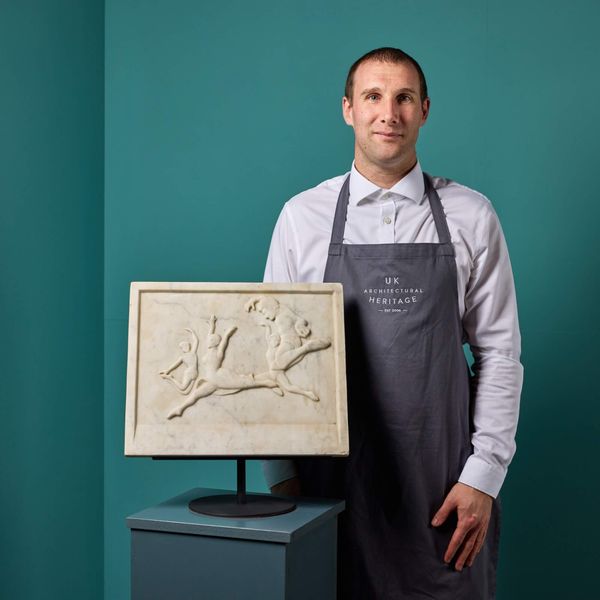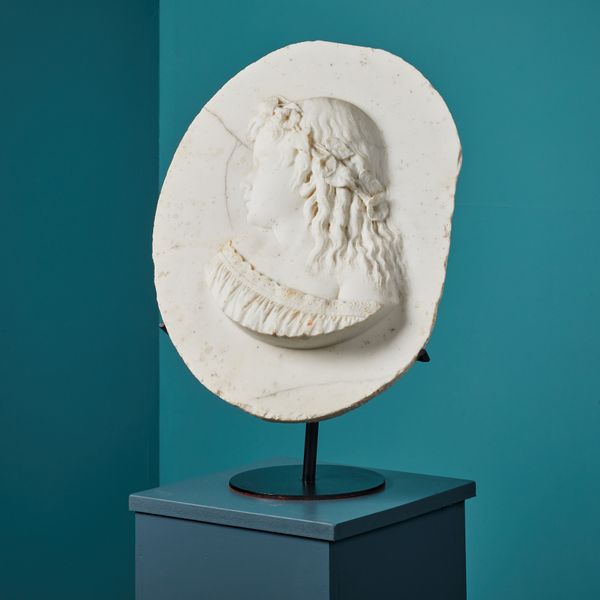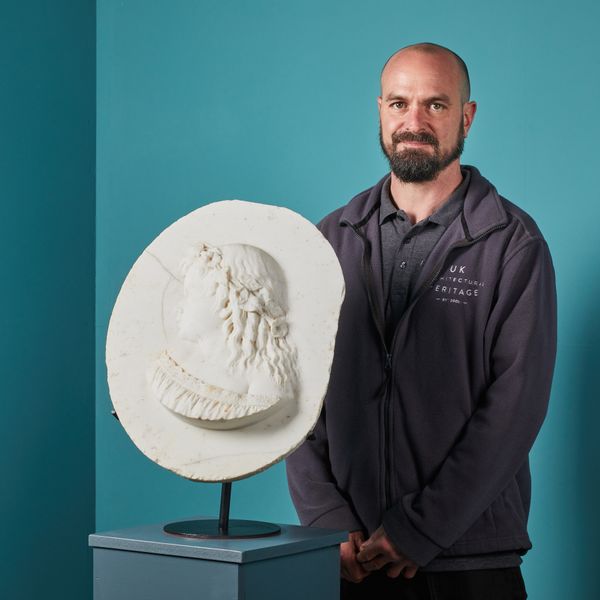About this piece
back to topAn unsigned antique marble portrait plaque depicting the famed late 18th to early 19th century British neoclassical sculptor and designer, John Flaxman. After a terracotta self-portrait that Flaxman created himself in 1778 while studying at the Royal Academy of Arts, which now resides at the V&A Museum, London.
Dating to circa 1800, this plaque has a certain likeness to Flaxman’s self-portrait, his flowing shoulder length hair, facial features and shirt buttoned up to the neck intricately handcarved into the finest statuary white marble. Though this portrait is framed into a square plaque, the roundel at the centre matches the scale of Flaxman’s terracotta self-portrait, which is considered one of the sculptor’s earliest works.
This plaque includes a bespoke steel stand as pictured, making a superb display piece for an interior or any collector of fine arts.
John Flaxman
John Flaxman (1755-1826) was a British sculptor, designer and illustrator who is today still considered one of most influential neoclassical artists in England and abroad.
Studying classical literature, Flaxman’s passion for art began in his youth when he worked in his father’s London plaster casting studio. In 1769, he began studying at the prestigious Royal Academy Schools, before working for English potter Josiah Wedgwood in 1775, designing profile portraits for his iconic jasperware medallions.
In 1787, Flaxman travelled to Rome to continue his studies of the antique and it was here that he drew great inspiration from Italian medieval and renaissance art. Italy was where Flaxman became one of the most accomplished neoclassical sculptors of his time, commissioned to create many large marble sculptures including ‘The Fury of Athamas’. He was even tasked with illustrating the works of Dante, Homer and Aeschylus, of which many of the original drawings today form part of the RA’s collection.
On his return to England in 1800, Flaxman was a well-established sculptor, taking a particular interest in funerary monuments. Such was his influence that years after his death in 1826, monuments of Flaxman were erected on the façade of the Royal Academy’s Burlington House and the V&A Museum.
Additional Dimensions
Plaque dimensions (without stand): 25.5 x 25.5 x D6 cm
Base: ø20 cm
